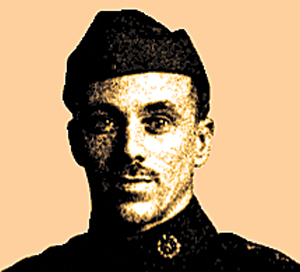INDIAN ARMED FORCES CHIEFS ON
OUR RELENTLESS AND FOCUSED PUBLISHING EFFORTS

SP Guide Publications puts forth a well compiled articulation of issues, pursuits and accomplishments of the Indian Army, over the years

I am confident that SP Guide Publications would continue to inform, inspire and influence.

My compliments to SP Guide Publications for informative and credible reportage on contemporary aerospace issues over the past six decades.
John Hedley (1887-1977)
Lieutenant Makepeace suddenly put the Bristol fighter into an abrupt nosedive. Taken by surprise, Captain Hedley was thrown out of the aircraft due to the negative G effect and began a free fall.

The history of aviation has a wealth of remarkable experiences and strange stories, some barely believable. And military aviation has seen some of the most incredible of these incidents. The lives and achievements of each flying ace, especially, contribute to the rich tapestry of the history of aerial warfare. However, there is often a lack of witnesses, as well as the “fog of war”, that makes it challenging to sift fact from fiction. The story of John Hedley, a First World War British ace, is one that clearly crosses the limits of credulity, yet cannot be discounted.
John Herbert Hedley, was born on July 19, 1887, in Northumberland, England. Hedley joined the British Army in August 1914 and was initially with the Northumberland Fusiliers. He transferred to the Royal Flying Corps (RFC) in 1917. Captain Hedley was credited with eleven aerial victories, all while he was with No. 20 Squadron flying the Bristol F.2b, a two-seat British biplane fighter and reconnaissance aircraft.
A bit of background to the extraordinary incident that gained Hedley the tag of “the luckiest man alive” is necessary. The F.2b was a highly manoeuvrable aircraft with a robust design that was able to hold its own in combat against single-seat fighters. Its crew usually included an observer apart from the lone pilot. While the pilot had a synchronised, fixed, forward-firing .303 inch Vickers machine gun, the observer in the rear cockpit had a .303 inch Lewis Gun. The observer basically functioned as a gunner and kept track of the number of kills scored by the pilot. He could also keep an eye on the very vulnerable rear quarters from where an attacker usually struck. The RFC did not provide its crew with parachutes in those days, thinking it would make them less aggressive if they could bail out easily. Besides, to fire his weapon effectively, the observer had to stand up in the cockpit.
Captain Hedley was flying as observer in a sortie over France on January 4, 1918, when near-disaster occurred. The pilot was Lieutenant Reginald “Jimmy” Makepeace, himself an RFC ace credited with 17 victories. The pair encountered German fighters and entered combat. In the harsh manoeuvring that followed, Makepeace suddenly put the Bristol fighter into an abrupt nosedive to escape being hit by machine-gun fire. Taken by surprise, Hedley was thrown out of the aircraft due to the negative G effect and began a free fall. Makepeace continued his rapid descent for several hundred feet. However, when he pulled up, Hedley purportedly saw the aircraft nearby, grabbed its tail, and crawled back into his seat. The pair then landed safely at base.
Hedley had another lucky escape on March 27, 1918, when he as pilot along with an observer in a Bristol F.2b were shot down by a German fighter. Both survived the crash without injuries and were captured. They spent the rest of the war in a German prisoner of war camp, and were repatriated in December 1918. After the war Hedley emigrated to America. Now billed as “the luckiest man alive”, he embarked on a career as an after-dinner speaker, mainly relating his hair-raising experience of January 1918. But could Hedley’s story be true?
There were several recorded instances during World War I of crew exiting their cockpits, both in fixed wing aeroplanes and airships, and surviving to tell the tale. In such cases they usually fell out of the cockpit but were still holding on – or attached to – some part of the plane, and hence could climb back to safety. About Hedley, Legion, Canada’s military history magazine, recently quoted a newspaper story of the period: “Captain Hedley described an experience which he had as an observer. Observers were not strapped in the airplanes and when the pilot caused the machine to dive suddenly, Hedley was thrown forward in the air. He had, however, retained his grasp on the machine gun and when the plane straightened out he was flung back upon the fuselage. He then managed to crawl back into the cockpit.” This is certainly more plausible than Hedley’s more colourful version. Even if Hedley did fall clear of the plane for a brief instant, the speed of descent of both machine and man may have been similar, enabling him to grab a portion of the plane and re-enter the cockpit. In the shock of his experience, he could hardly be expected to accurately assess how far he fell towards the ground before returning to safety.
John Hedley died in Los Angeles on April 1, 1977, at the ripe old age of 90. Jimmy Makepeace, the pilot on that fateful day in 1918 was not so lucky. In May 1918 both Makepeace and his crewman were killed when the wings of their Bristol F.2b fighter suffered structural failure in flight.





